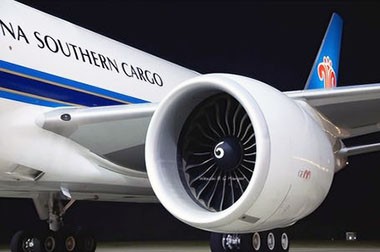2219 T87 Aluminum
2219 T87 is a specific temper of 2219 aluminum alloy, known for its high strength, excellent heat resistance, and superior mechanical properties. This alloy is primarily based on aluminum and copper, with small amounts of manganese and other elements.
To achieve the T87 temper, 2219 aluminum undergoes three key steps: solution heat treatment, strain hardening (7%), and artificial aging.
Through precise heat treatment processes, the 2219-T87 temper achieves the best balance of properties among the various 2219 alloy variants.
2219-T87 aluminum is a high-performance alloy that holds a significant position in aerospace and engineering applications due to its outstanding strength, heat resistance, and crack resistance. These characteristics allow it to excel in demanding environments, especially under high-temperature and high-load conditions.
Features of Aluminum 2219-T87
- High Strength: Among all 2219 tempers, T87 offers the highest strength, making it suitable for high-load environments.
- Excellent Heat Resistance: It maintains superior performance in high-temperature environments, with a maximum operating temperature of up to 200°C.
- Superior Crack Resistance: The unique heat treatment process enhances the material's fracture toughness and crack resistance.
- Good Weldability: Suitable for Tungsten Inert Gas (TIG) welding and Metal Inert Gas (MIG) welding.
- Corrosion Resistance: With proper surface treatment, it provides good resistance to corrosion.
Aluminum 2219 T87 Material Data Sheet
| Physical Properties | Metric | English | Comments |
| Density | 2.84 g/cc | 0.103 lb/in³ | AA; Typical |
| Aluminum 2219 T87 Mechanical Properties | |||
| Hardness, Brinell | 130 | 130 | 500 kg load with 10 mm ball |
| Hardness, Knoop | 163 | 163 | Converted from Brinell Hardness Value |
| Hardness, Rockwell A | 49.5 | 49.5 | Converted from Brinell Hardness Value |
| Hardness, Rockwell B | 80 | 80 | Converted from Brinell Hardness Value |
| Hardness, Vickers | 149 | 149 | Converted from Brinell Hardness Value |
| Ultimate Tensile Strength | 476 MPa | 69000 psi | AA; Typical |
| Tensile Yield Strength | 393 MPa | 57000 psi | AA; Typical |
| Elongation at Break | 10 % | 10 % | AA; Typical; 1/16 in. (1.6 mm) Thickness |
| Modulus of Elasticity | 73.1 GPa | 10600 ksi | AA; Typical; Average of tension and compression. Compression modulus is about 2% greater than tensile modulus. |
| Notched Tensile Strength | 379 MPa | 55000 psi | 2.5 cm width x 0.16 cm thick side-notched specimen, Kt = 17. |
| Poisson's Ratio | 0.33 | 0.33 | Estimated from trends in similar Al alloys. |
| Fatigue Strength | 103 MPa | 15000 psi | AA; 500,000,000 cycles completely reversed stress; RR Moore machine/specimen |
| Shear Modulus | 27 GPa | 3920 ksi | Estimated from similar Al alloys. |
| Shear Strength | 280 MPa | 40600 psi | |
| Aluminum 2219 T87 Electrical Properties | |||
| Electrical Resistivity | 5.82e-006 ohm-cm | 5.82e-006 ohm-cm | AA; Typical at 68°F |
| Aluminum 2219 T87 Thermal Properties | |||
| CTE, linear 68°F | 22.3 µm/m-°C | 12.4 µin/in-°F | AA; Typical; Average over 68-212°F range. |
| CTE, linear 250°C | 24.1 µm/m-°C | 13.4 µin/in-°F | Estimated from trends in similar Al alloys. 20-300°C. |
| Specific Heat Capacity | 0.864 J/g-°C | 0.207 BTU/lb-°F | |
| Thermal Conductivity | 121 W/m-K | 840 BTU-in/hr-ft²-°F | AA; Typical at 77°F |
| Melting Point | 543 - 643 °C | 1010 - 1190 °F | AA; Typical range based on typical composition for wrought products 1/4 inch thickness or greater. Eutectic melting is not eliminated by homogenization. |
| Solidus | 543 °C | 1010 °F | AA; Typical |
| Liquidus | 643 °C | 1190 °F | AA; Typical |
| Aluminum 2219 T87 Processing Properties | |||
| Annealing Temperature | 413 °C | 775 °F | |
| Solution Temperature | 535 °C | 995 °F | |
| Aging Temperature | 163 - 191 °C | 325 - 375 °F | from 18 to 36 hr at temperature |
Aluminum 2219-T87 Composition
| Aluminum | Copper | Manganese | Zirconium | Vanadium | Titanium | Iron (max) | Silicon (max) | Magnesium (max) | Zinc (max) | Others Each (max) | Others Total |
| Balance | 5.80 - 6.80% | 0.20 - 0.40% | 0.10 - 0.25% | 0.05 - 0.15% | 0.02 - 0.10% | 0.30% | 0.20% | 0.02 | 0.10% | 0.05% | 0.15% |
Applications of Aluminum 2219-T87
2219-T87 aluminum is widely used in aerospace and high-performance engineering due to its high strength and heat resistance.
- Spacecraft Structures: Including rocket fuel tanks and fuselage components.
- Aircraft Frames: Used in fuselage and wing spars requiring extremely high strength.
- Missile Components: Such as shells and heat-sensitive parts.
- High-Performance Parts: Mechanical components subjected to high temperatures and stress conditions.

